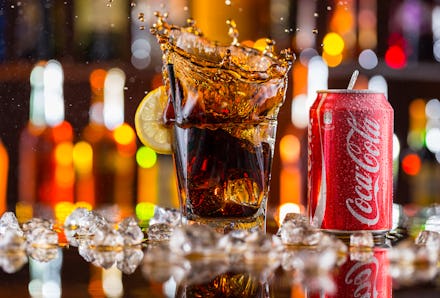Coca-Cola's quarterly sales are up — and this sneaky marketing trick is one reason why

Coke Zero? More like Coke hero... at least as far as third-quarter earnings are concerned: Coca-Cola beat Wall Street analysts' expectations this past quarter with a revenue of $10.6 billion, the company announced Wednesday.
One irony is that the outperformance was in part helped by the war on sugar.
Sports drinks — which are perceived as healthier than soda, even if they're sugary — and water helped boost the company's non-bubbly beverage sales by 3%.
And Coca-Cola has continued to reap benefits of a clever strategy, introduced in 2007, to cater to health-conscious customers: their 7.5-ounce "mini cans." Indeed, smaller packaging means the company profits more on each can or small bottle sold.
You know how your mom always told you you'll save money if you buy in bulk (hello, 24-pack of Costco toilet paper)? Coca-Cola's trick works because the reverse is true too: You pay more for less — but you probably don't notice because you're doing it one little bit at a time.
In recent years, as the world has become more anti-sugar, Coca-Cola has reversed its strategy of trying to get people to buy huge plastic soda bottles: It is putting more effort into selling its "adorable" teeny-tiny cans and glass bottles.
One possible reason this plan is paying off?
Smaller packaging actually causes people to consume more soda than they otherwise would, according to one study: Researchers found that subjects bought significantly more pop if their options included bundles of smaller drink sizes instead of just big single-serve sizes.
Finally, if the impact of small soda cans on your health — and wallet — doesn't worry you, think of the environment: Smaller packaging is harder to recycle.